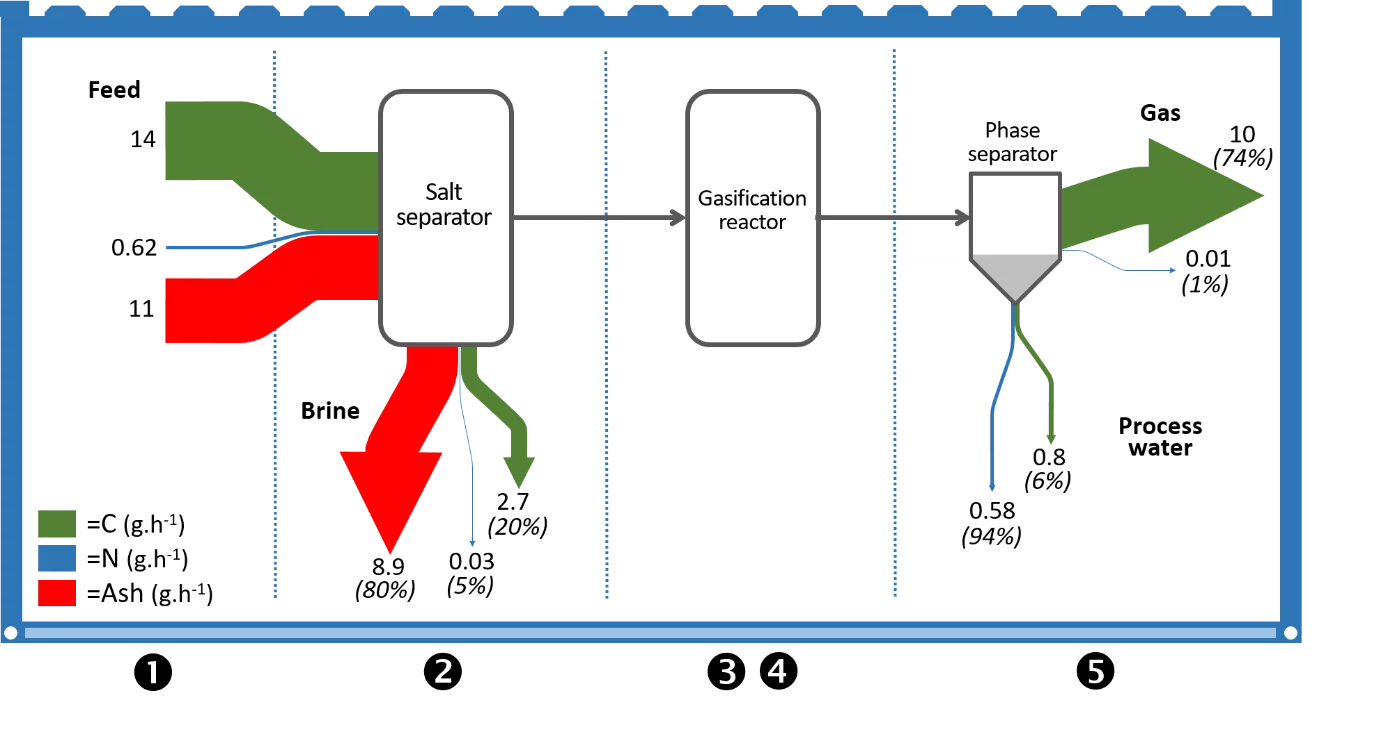Valorisation of digested sewage sludge by a catalytic hydrothermal gasification process
Coworkers: Daniel Fischer, Dr. David Baudouin
The energy recovery of sludge produced during the treatment of wastewater represents an important issue for the SIAAP. Today, the anaerobic digestion sector admits more than 70% of the sludge, making it possible to produce more than 80 million cubic meters of biogas. The SIAAP infrastructures are evolving to optimize the valorization of this biogas: today mainly used internally for treatment processes, the processes are evolving to gradually direct it towards injection. The digestate resulting from anaerobic digestion, like the portion of undigested sludge, has a significant residual energy potential. New thermochemical valorization processes could make it possible to best mobilize this potential and increase the production of biogas on SIAAP infrastructures.
During the first phase of the project, a series of cHTG tests was carried out in the CPE group using a batch reactor with different digested or partially digested sludge of interest for the SIAAP. The results show that cHTG allows significant biogas production with gasification yields (carbon basis) and chemical energy yields reaching 87% and 65%, respectively. The Seine Center sludge demonstrated the highest potential for valorization by cHTG with 0.53 m3.kgMS-1, the Seine Valenton and Seine Grésillons sludge also demonstrating good potential.
In the second phase of the project, hydrothermal gasification tests on a continuous gasification unit operating at 1 kg.h-1 will be carried out on two sewage sludges selected as the most interesting. It was shown that significant biogas production is possible, with 74% and 65% of the carbon and calorific value from the digestate converted to methane-rich biogas, respectively. Thus, this innovative process allows the production of about 0.5 m3·kgDM-1 of additional biogas with the tested digested sludge.
In the third phase of the project, the evaluation of the integration of a hydrothermal gasification process in a SIAAP STEP is planned. This assessment will consist of modeling the mass and energy balance and the integration of heat and electricity into an existing STEP. The environmental impacts will be determined by characterizing and weighing the results of the treatment plan and modeling of the different components based on current or future French standards. Several scenarios will be constructed for different inputs (mesophilic/thermophilic digestates, raw sludge) and different scales depending on the scenarios considered the most viable for the SIAAP, and different valorization scenarios for different effluents will be considered. For biogas, purification scenarios for injection into the city network or the production of heat and electricity (turbine, burner) will be considered. For brine, phosphorus extraction or decontamination scenarios before spreading will be evaluated, while for process water, different approaches for ammonium recovery will be considered. Overall assessments can then be carried out to assess the economic and environmental relevance of this technology according to the different matrices and different waste management scenarios on a territorial scale.


